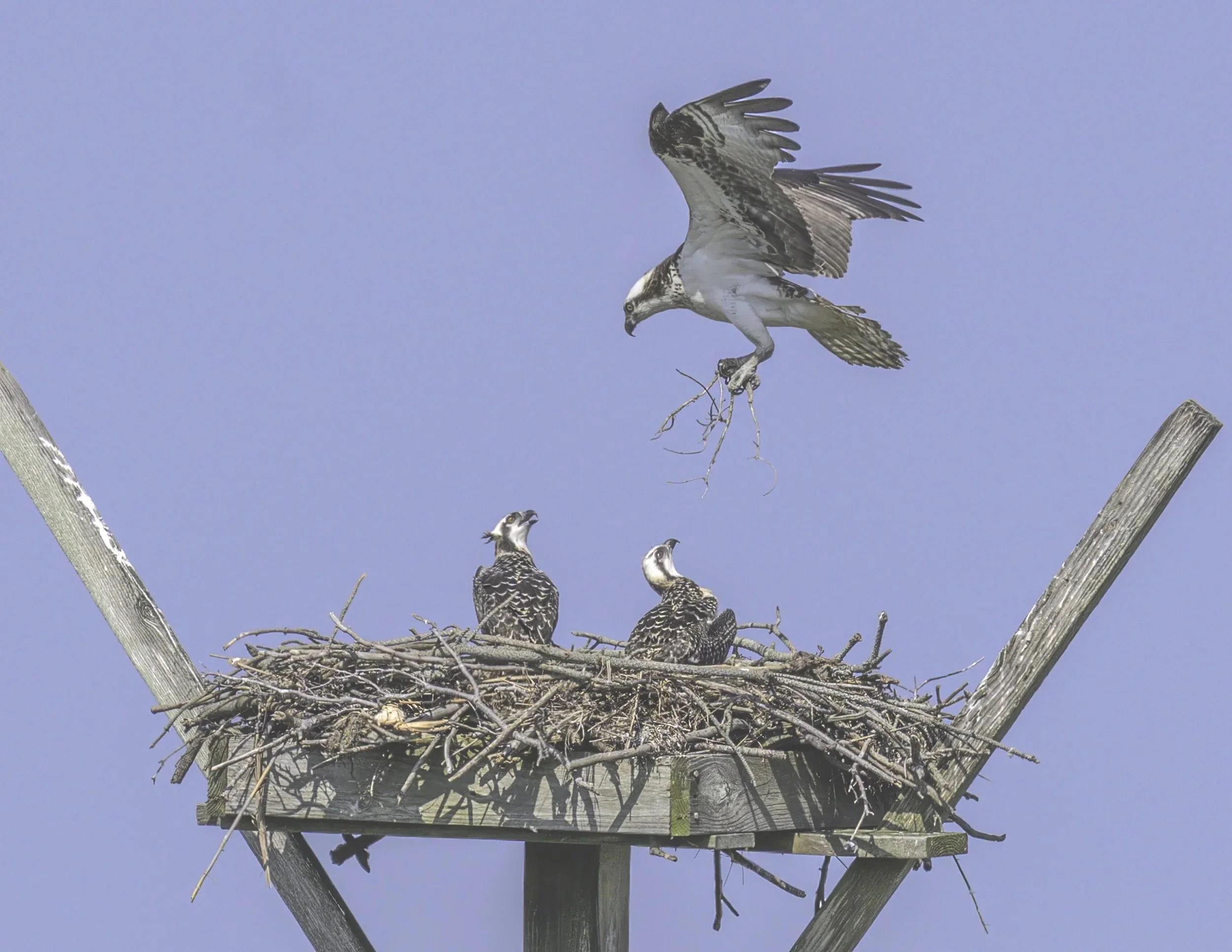Sandy Cove Osprey family
For the past several years, when our family ventures out to Long Beach Island in New Jersey for our annual family beach getaway, one venue I have to visit is the osprey nest in the marsh behind the Long Beach Island Institute off Sandy Cove Lane. For at least 8 years now, this nest has been reoccupied each year and has to my knowledge successfully raised chicks. It was great to see that once again this year, the nest is occupied by two adults with their young ospreys. These young are well on their way to adulthood from the looks of them. Osprey chicks hatch covered in soft, white down feathers and rely entirely on their parents for food and protection during their early weeks. But they grow rapidly, developing strong wing feathers that prepare them for their first flight at about 7 to 8 weeks old. During this time, the chicks are carefully fed a diet primarily consisting of fish, brought back to the nest by the attentive adult ospreys. The nesting sites are typically high and secure, such as on tree branches or in the case of our Sandy Cove site, man-made platforms, providing safety from predators as the chicks mature.
Young osprey chicks await their next meal …..
When I first arrived at the blind provided by the Long Beach Island Foundation of Arts and Sciences, two chicks were seen occupying the nest which has been home for some years now to two adults dubbed “Wendy” and “Jack”. These two chicks have already been banded and can hopefully be tracked to their wintering grounds by researchers around the globe. Several of the birds raised here at this nest have shown up in Trinidad!
Off a short distance to the left from the nest site, a lone adult was perched on a post, perhaps keeping an eye out on the youngsters while the second adult was out hunting for the chicks next meal. For whatever reason, one of the fish most often caught by the osprey adults, Menhaden (also known as Bunker), has been relatively scarce this summer and when these little ones were tagged and measured earlier this month, the researchers noted that they were a bit less robust than normal at this point in their growth. Hopefully, they will be able to thrive this summer and be ready to fledge in the upcoming weeks.
Meanwhile, back at the nest, adult number two returned to the nest with the tiniest of morsels for these two young. I another shot (see image below) the head of a small fish can be seen in those massive talons. Hopefully, he still had the quarry for his chicks as they certainly look like they are expecting a nice meal. That small fish I saw will not go far with two ospreys of this size! We can only hope that the decline in the population of bunker which has been noted over the past couple of years is only temporary and not another result of the changing climate and that there will be plenty of food fish for the osprey in years to come.



